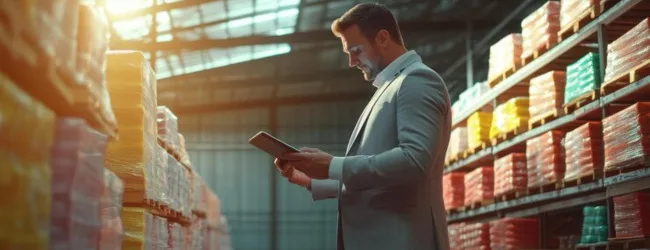Table of contents
- Why Start a Cold Storage Business in India?
- Step-by-Step Guide to Starting Your Cold Storage Business
- Step 1. Conduct Thorough Market Research
- Step 2. Develop a Comprehensive Business Plan
- Step 3. Secure Funding
- Step 4. Choose the Right Location and Infrastructure
- Step 5. Obtain Necessary Licenses and Permits
- Step 6. Recruit and Train Staff
- Step 7. Implement Effective Marketing and Sales Strategies
- Step 8. Ensure Efficient Operations and Maintenance
- Conclusion
- Frequently Asked Questions (FAQs)
India, an agricultural powerhouse, faces a significant challenge: post-harvest losses. A substantial portion of fruits, vegetables, dairy, meat, and other perishable goods spoils due to the lack of proper storage facilities. This presents a lucrative opportunity for entrepreneurs looking to establish a cold storage business.
This comprehensive guide will walk you through the essential steps to start a profitable cold storage business in India. We’ll cover everything from initial planning to operational strategies, ensuring you have a solid foundation for success in the cold storage business.
Why Start a Cold Storage Business in India?
The demand for cold storage in India is continuously growing, driven by several factors:
- Large Agricultural Production: India is a major producer of various agricultural commodities, creating a constant need for preservation.
- Increasing Food Processing Industry: The expanding food processing sector requires cold storage facilities to maintain the quality of raw materials and finished products.
- Government Initiatives: The Indian government is actively promoting the development of cold chain infrastructure through various schemes and subsidies. For instance, the Mission for Integrated Development of Horticulture (MIDH) provides financial assistance for setting up cold storage units.
- Growing Awareness of Food Quality: Consumers are increasingly demanding high-quality and fresh produce, necessitating better storage solutions.
- Reduced Post-Harvest Losses: Proper cold storage can significantly reduce the spoilage of perishable goods, benefiting both farmers and businesses. Studies estimate that India incurs post-harvest losses of around ₹92,000 crore annually due to inadequate storage infrastructure.
Step-by-Step Guide to Starting Your Cold Storage Business
Starting a successful cold storage business requires careful planning and execution. Here’s a step-by-step guide:
Step 1. Conduct Thorough Market Research
- Identify Target Commodities: Determine which products you want to store (fruits, vegetables, dairy, meat, etc.). Consider the local agricultural produce and market demand. For example, in Maharashtra, focusing on mangoes and grapes might be a viable option, while in Punjab, wheat and potatoes could be key.
- Analyze Competition: Research existing cold storage facilities in your target area. Understand their capacity, services offered, pricing, and clientele. Identify any gaps in the market that you can fill.
- Assess Demand: Evaluate the demand for cold storage from farmers, wholesalers, retailers, food processors, and exporters in your chosen location. Talk to potential customers to gauge their requirements.
- Determine Location Advantages: Identify a strategic location with good connectivity to farms, markets, and transportation networks. Proximity to highways and railway lines can be a significant advantage.
ALSO READ | Top 5 High-Profit Home-Based Businesses for Aspiring Entrepreneurs
Step 2. Develop a Comprehensive Business Plan

A well-structured business plan is crucial for securing funding and guiding your operations. It should include:
- Executive Summary: A brief overview of your business idea, objectives, and strategies.
- Company Description: Details about your business structure, mission, and vision.
- Market Analysis: In-depth analysis of your target market, competition, and demand.
- Services Offered: Specify the types of cold storage services you will provide (e.g., bulk storage, blast freezing, controlled atmosphere storage).
- Marketing and Sales Strategy: Outline how you will attract and retain customers.
- Operational Plan: Describe your facility layout, equipment, staffing, and operational processes.
- Financial Projections: Include startup costs, revenue forecasts, profit and loss statements, and cash flow projections. This is critical for securing loans.
- Management Team: Information about the key personnel and their expertise.
Step 3. Secure Funding
Setting up a cold storage business requires significant capital investment. Explore various funding options:
- Personal Savings: Your own funds can form a part of the investment.
- Bank Loans: Approach banks and financial institutions with your detailed business plan. Schemes like the Agricultural Infrastructure Fund (AIF) offer concessional loans for agricultural infrastructure projects, including cold storage.
- Government Subsidies: Investigate central and state government schemes that provide subsidies for setting up cold storage units. The National Horticulture Board (NHB) and state-level horticulture missions often have relevant schemes.
- Venture Capital and Private Equity: For larger projects, consider seeking investment from venture capitalists or private equity firms.
💡Pro Tip: If you want to start a business but have too many doubts, connect with a business expert from Boss Wallah for guidance – https://bw1.in/1116
Step 4. Choose the Right Location and Infrastructure

- Land Selection: Select a suitable plot of land considering factors like accessibility, power availability, water supply, and zoning regulations.
- Facility Design: Plan the layout of your cold storage unit, including chambers for different commodities, loading and unloading areas, office space, and power backup systems. Consider energy efficiency in your design.
- Technology and Equipment: Invest in reliable and energy-efficient refrigeration systems, insulation materials, temperature control systems, material handling equipment (e.g., forklifts, pallets), and weighing scales. Different commodities require specific temperature and humidity levels. For instance, potatoes are typically stored at 2-4°C with high humidity, while apples require 0-1°C with controlled atmosphere.
- Power Backup: Install a reliable generator to ensure uninterrupted power supply, which is crucial for maintaining the temperature inside the cold storage.
Step 5. Obtain Necessary Licenses and Permits
Starting a cold storage business requires various licenses and permits from local, state, and central government authorities. These may include:
- Business Registration: Register your business as a sole proprietorship, partnership, or private limited company.
- GST Registration: Obtain 1 Goods and Services Tax (GST) registration.
- Factory License: If your facility meets the criteria under the Factories Act.
- Pollution Control Board Clearance: Ensure compliance with environmental regulations.
- Fire Safety Certificate: Obtain clearance from the fire department.
- Food Safety and Standards Authority of India (FSSAI) License: If you are storing food products.
- Electricity Connection Approval: Obtain the necessary approvals for power supply.
It’s crucial to research and obtain all the required licenses before commencing operations to avoid legal complications.
Step 6. Recruit and Train Staff

Hire skilled personnel to manage the operations of your cold storage business. This includes:
- Plant Manager: Oversees the overall operations.
- Refrigeration Technicians: Responsible for maintaining and repairing the refrigeration systems.
- Warehouse Staff: Handles the loading, unloading, and stacking of goods.
- Accountants and Administrative Staff: Manages the financial and administrative tasks.
- Security Personnel: Ensures the safety and security of the facility.
Provide adequate training to your staff on safety procedures, equipment operation, and best practices for handling different commodities.
ALSO READ – Top 10 Profitable DIY Business Ideas to Start in 2025
Step 7. Implement Effective Marketing and Sales Strategies
To attract customers to your cold storage business, implement a robust marketing and sales strategy:
- Direct Outreach: Contact farmers, wholesalers, retailers, food processors, and exporters in your target area.
- Networking: Participate in agricultural fairs, trade shows, and industry events.
- Online Presence: Create a website and use digital marketing to reach potential clients.
- Competitive Pricing: Offer competitive and transparent pricing for your services.
- Build Relationships: Focus on building strong and long-term relationships with your clients by providing reliable and high-quality services.
- Offer Value-Added Services: Consider offering additional services like sorting, grading, packaging, and transportation to attract more clients.
Step 8. Ensure Efficient Operations and Maintenance
- Standard Operating Procedures (SOPs): Develop and implement clear SOPs for all operational processes.
- Temperature and Humidity Control: Maintain strict control over temperature and humidity levels as per the requirements of the stored commodities.
- Inventory Management: Implement an efficient inventory management system to track the stored goods.
- Regular Maintenance: Conduct regular maintenance of your refrigeration systems and other equipment to prevent breakdowns and ensure optimal performance. Preventive maintenance is key to minimizing operational costs and maximizing efficiency.
- Energy Efficiency: Implement measures to reduce energy consumption, such as using energy-efficient equipment and optimizing insulation.
Need Expert Guidance?
Starting a business can be challenging, but you don’t have to do it alone! At Boss Wallah, our 2,000+ business experts are ready to provide valuable insights and guidance. Whether you need help with marketing, finance, sourcing, or any other area of any business, our business experts are here to help you succeed- https://bw1.in/1116
Confused about Which Business to Start?
Want to start your own business but unsure which one to choose? Explore Boss Wallah, where you’ll find 500+ courses by successful business owners, featuring practical, step-by-step guides on starting and growing various businesses. Find your perfect business idea today – https://bw1.in/1111
Conclusion
Starting a cold storage business in India presents a significant opportunity for entrepreneurs. By following this step-by-step guide, conducting thorough research, securing adequate funding, and focusing on efficient operations and customer satisfaction, you can establish a profitable and sustainable venture that contributes to reducing food wastage and supporting the agricultural sector. The growing demand, coupled with government support, makes the cold storage business a promising sector in the Indian economy.
Frequently Asked Questions (FAQs)
1 . What is the initial investment required to start a cold storage business in India?
- The initial investment can vary significantly depending on the size, location, technology used, and the type of commodities you plan to store. It can range from ₹50 lakhs to ₹5 crore or more. Factors like land cost, construction, refrigeration equipment, and licenses contribute to this range.
2 . What are the main costs involved in running a cold storage business?
- The main operational costs include electricity, rent (if applicable), salaries of staff, maintenance and repairs, insurance, and marketing expenses. Electricity costs are typically a major component of the operational expenses.
3 . How can I increase the profitability of my cold storage business?
- Profitability can be increased by optimizing energy efficiency, minimizing operational costs, attracting a consistent client base, offering value-added services, and exploring opportunities for storing high-value commodities.
4 . What are the government subsidies available for setting up cold storage in India?
- Several government schemes offer subsidies, including the Mission for Integrated Development of Horticulture (MIDH), the Agricultural Infrastructure Fund (AIF), and schemes from the National Horticulture Board (NHB) and state-level horticulture missions. The amount and terms of subsidies vary.
5 . What type of cold storage is best suited for my needs?
- The best type depends on the commodities you intend to store. Options include general-purpose cold storage, controlled atmosphere (CA) storage (ideal for fruits and vegetables requiring specific gas compositions), blast freezers (for rapid freezing), and refrigerated warehouses.
6 . How do I find clients for my cold storage business?
- You can find clients through direct outreach to farmers, wholesalers, retailers, food processors, and exporters, participating in agricultural events, building an online presence, and offering competitive pricing and reliable services.
7 . What are the key factors to consider when choosing a location for a cold storage facility?
- Key factors include proximity to agricultural production areas and markets, transportation connectivity (roads, railways), availability of utilities (power, water), land cost, and local regulations.
8 . What is the typical lifespan of a cold storage facility?
- With proper maintenance, a well-constructed cold storage facility can have a lifespan of 20-30 years or even longer. Regular maintenance of the refrigeration system and the building structure is crucial.


